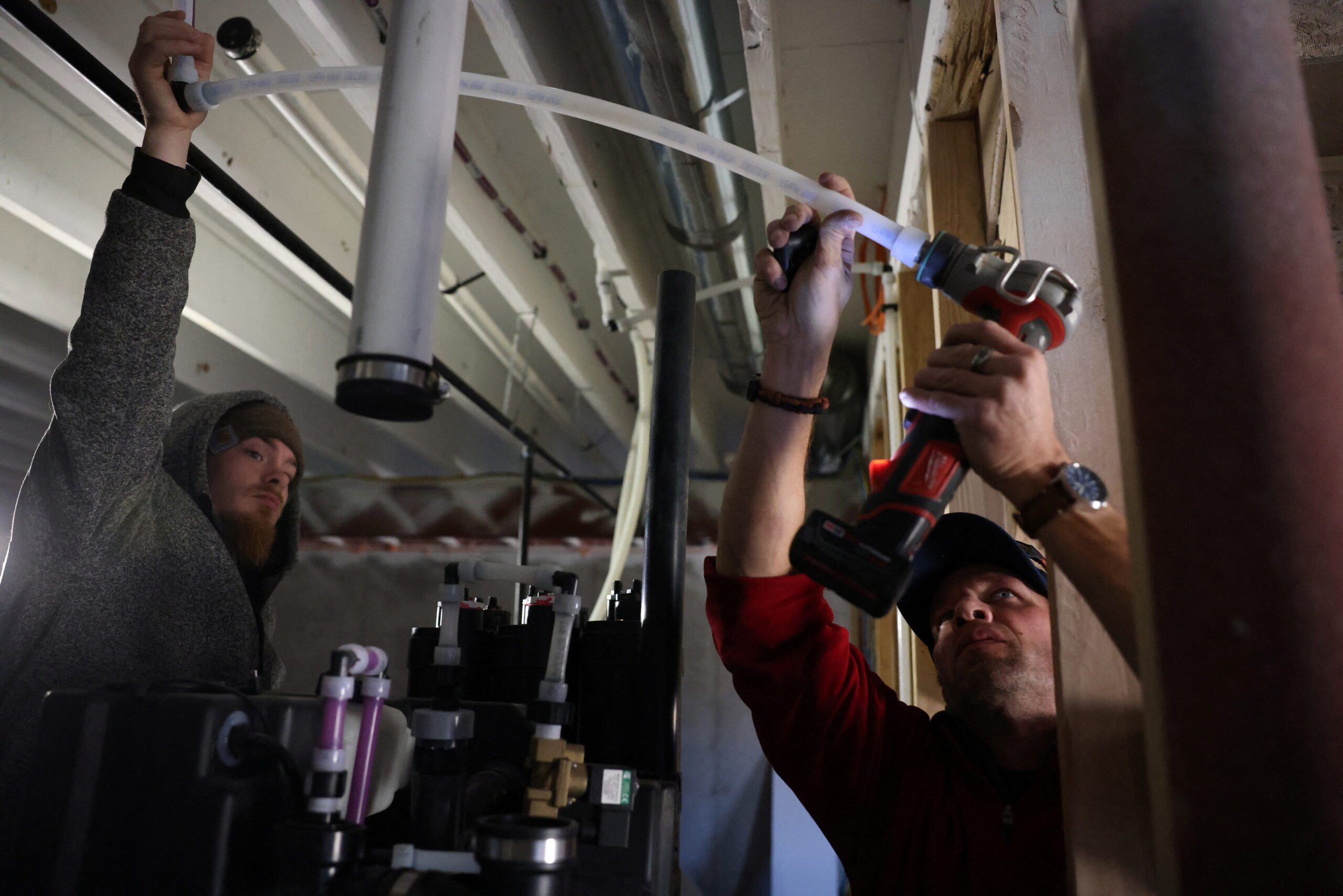(Reuters) – In a rooftop greenhouse near downtown Denver, cash crops are thriving on hydroponic life support. Arugula. Chard. Escarole. Cabbage.
“And basil,” said Altius Farms CEO Sally Herbert, plucking a bright leaf. “Which you really should taste. Because it’s magnificent.”
The vertical farm is one of many Colorado models for coping with increasing water scarcity in the western United States, as climate change makes droughts more frequent and more severe.
Other projects have Coloradans testing water recycling and building barriers against the wildfire runoff that can taint supplies.
Colorado is hardly alone. A major U.N. climate report published recently notes that half the world’s population is already seeing severe water scarcity for at least some part of the year. In the U.S. West, drought and earlier runoff from an increasingly diminished snowpack will increase water scarcity during the summer, the Intergovernmental Panel on Climate Change said.
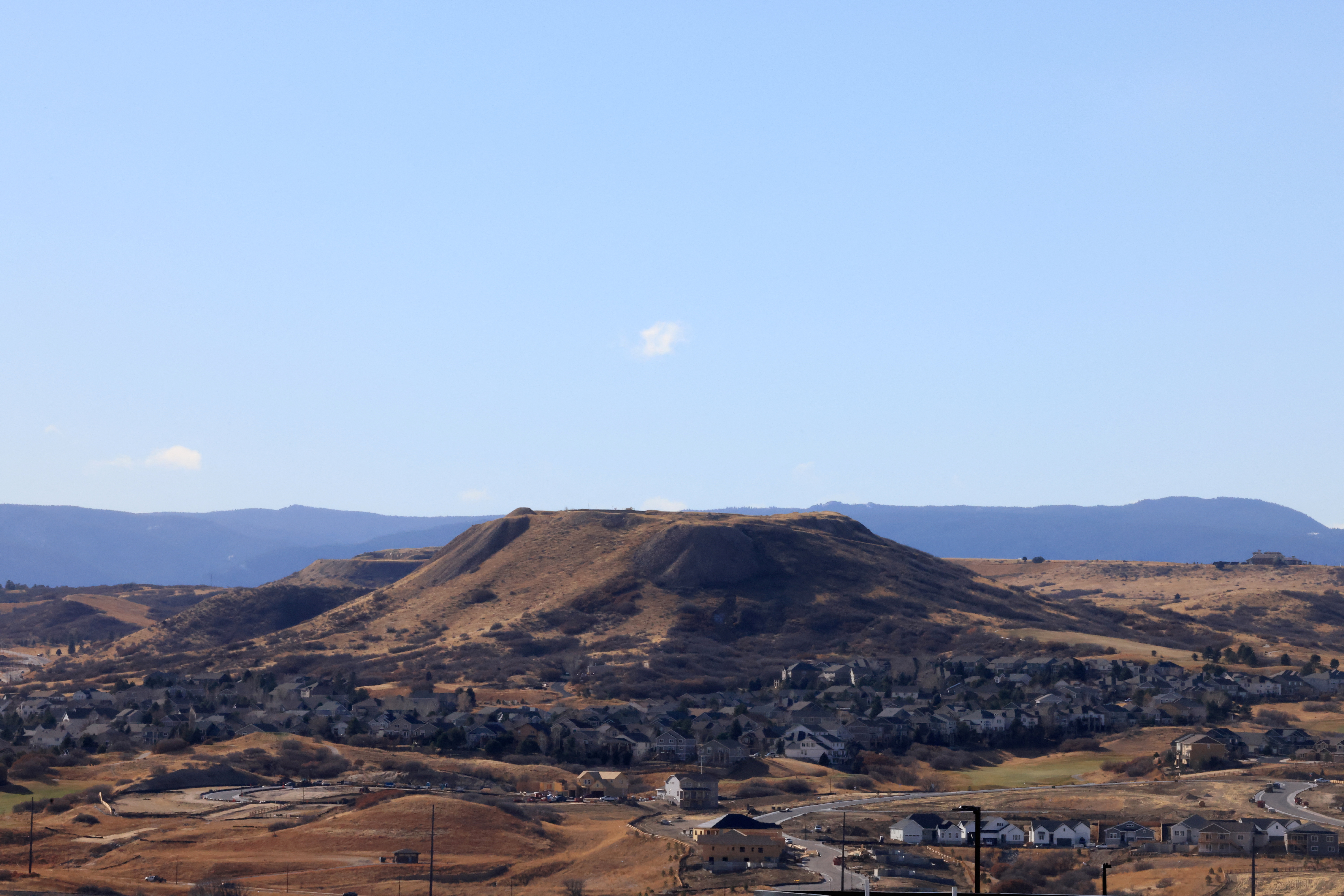
While Colorado so far has met the water needs of its 6 million residents, it could face a roughly 30% shortfall by 2050 as the population grows while climate impacts escalate, according to one likely scenario experts prepared for the state’s official Water Plan https://cwcb.colorado.gov/colorado-water-plan/technical-update-to-the-plan.
Already, the region’s worst drought in more than a century has left water levels starkly low in the Lake Mead reservoir supplying Colorado River water to neighboring states.
“It’s mind-blowing,” Herbert said.
FARMING UPWARD
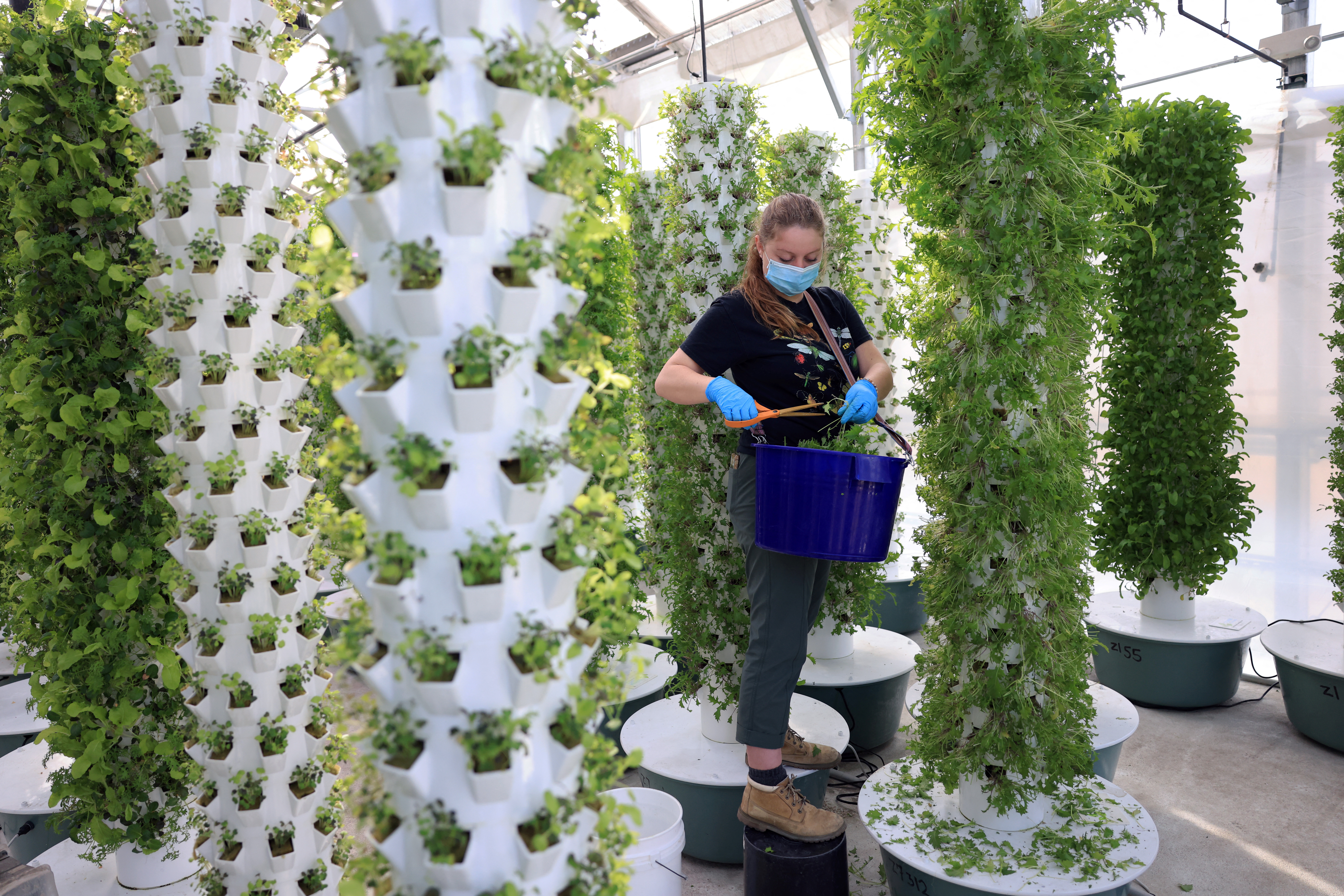
No one fix will ensure future water quality, quantity and affordability. Approaches such as water recycling have faced regulatory gaps and public resistance.
Vertical farming, meanwhile, won’t work at the scale needed for staple crops like corn or wheat. And while Altius uses mostly natural light to grow 25,000 pounds (11,300 kg) of produce each year on its 7,000-square-foot rooftop, others rely on lamps and electricity. That can make the produce grown pricier.
Still, vertical farms use 95% less water than traditional farming. Other benefits can include reduced transportation costs, with produce grown closer to where consumers live. And foods that can be grown indoors can be a boon outside of temperate regions, said Michael Dent, an agriculture and food technology analyst at the IDTechEx market research group.
Such benefits are luring investment: Georgia-based multinational Kalera is now repurposing a warehouse near Denver’s airport – close to highways and supermarket distribution centers. The company, founded in 2010, grows produce in the Middle East, Asia and Europe, with plans to expand further.
Retail giant Walmart Inc in January joined a $400 million funding round by the San Francisco vertical startup Plenty, a deal still subject to regulatory approval.
And last year, New York-based vertical startup Bowery Farming raised $300 million in a funding round.
It can be tough to assess a vertical farm’s overall environmental footprint. A farm run on wind power will have fewer polluting carbon emissions than one run on fossil fuels, for example.
Kalera Chief Commercial Officer Henner Schwarz said there’s “frankly speaking, a lot of smoke and mirrors. Everybody has the ‘most sustainable technology’ and lots of blah, blah.”
“But when it comes to water savings, I’m actually very confident in saying that we use only 3% of the water traditional agriculture would use,” Schwarz said.
‘LIQUID GOLD’
At a home construction site, a plumbing crew huddled around a black, refrigerator-size piece of technology.
Once hooked up, the system would siphon off and filter shower and bath water, removing skin cells, soap and hair before sending the water back to the toilets for flushing. “This is the first one that has taken the filtration to this level,” said Todd Moritzky, the plumbing company’s owner.
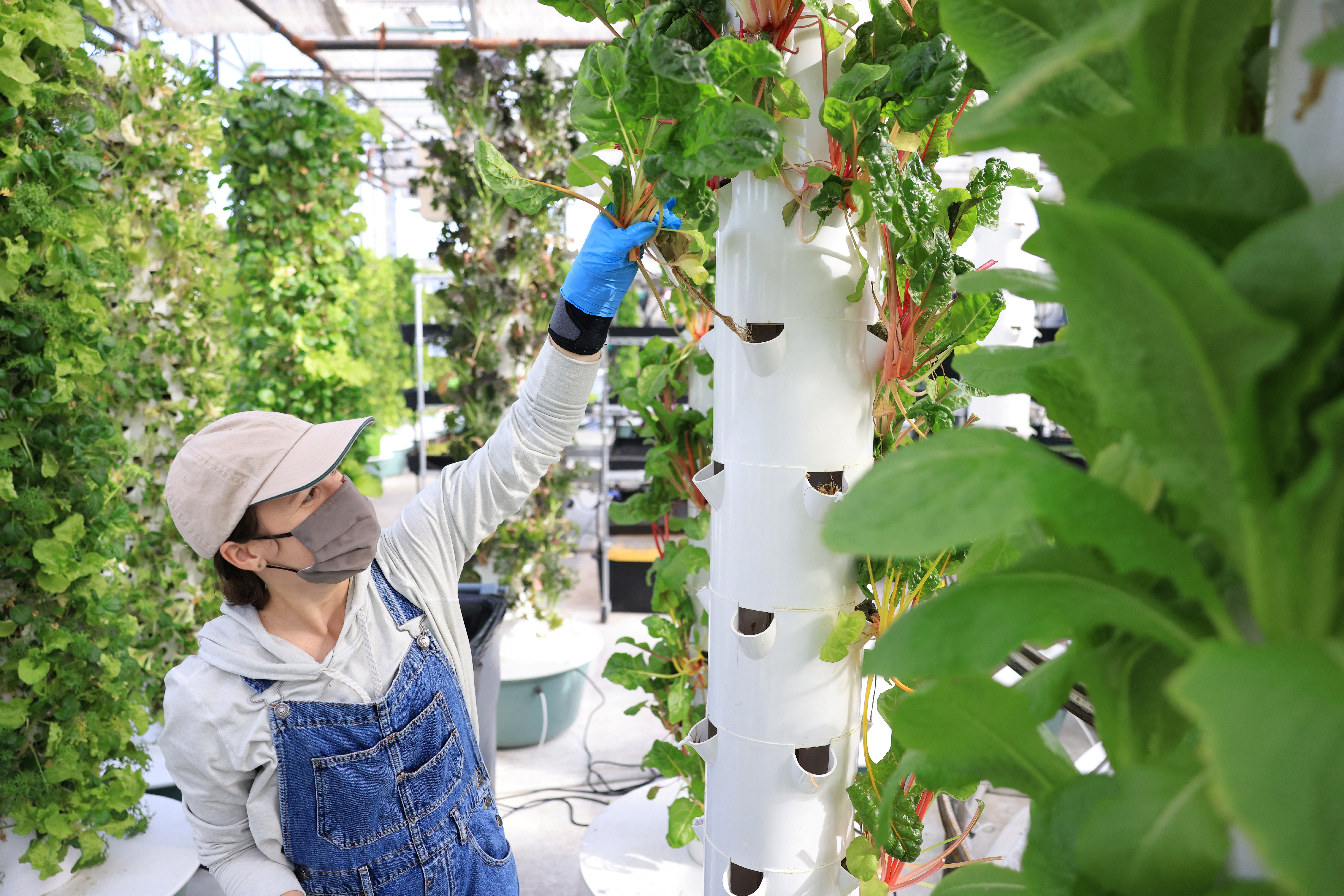
His crew were working on a house construction by Lennar in Castle Rock, south of Denver. Lennar said using the filtration system, made by the Canadian company Greyter, in earlier builds had cut home water use by up to 25%.
“Water is liquid gold here,” said Eric Feder, Lennar’s Colorado-based director of national efforts to embrace homebuilding innovations. The company would like to make Greyter systems the standard in its homes, he said.
But in Colorado, Castle Rock along with Denver and Pitkin County are the only three communities that allow in-home water recycling.
“Plumbing codes, ordinances, local regulations are just catching up to that technology availability,” said Pat Sinicropi, head of the WateReuse trade association.
Castle Rock gets less than 15 inches (38 cm) of precipitation a year. The town, with a population of 70,000, is projected to grow to 100,000 by 2060. It is aiming to reduce its daily water consumption from about 115 gallons per person to below 100 gallons within a decade.
“We fully intend to achieve it,” said Mark Marlowe, director of Castle Rock Water. The utility now offers home developers fee discounts if they install systems such as Greyter’s.
SAFE TO DRINK
Just south of Castle Rock in Colorado Springs, Tzahi Cath has been working with the local utility to demonstrate that recycled wastewater can be used not just to flush toilets, but also for drinking.
The Colorado School of Mines engineering professor and his students in Golden built a portable water treatment laboratory to further process the utility’s partly treated wastewater so that its safe for consumption.
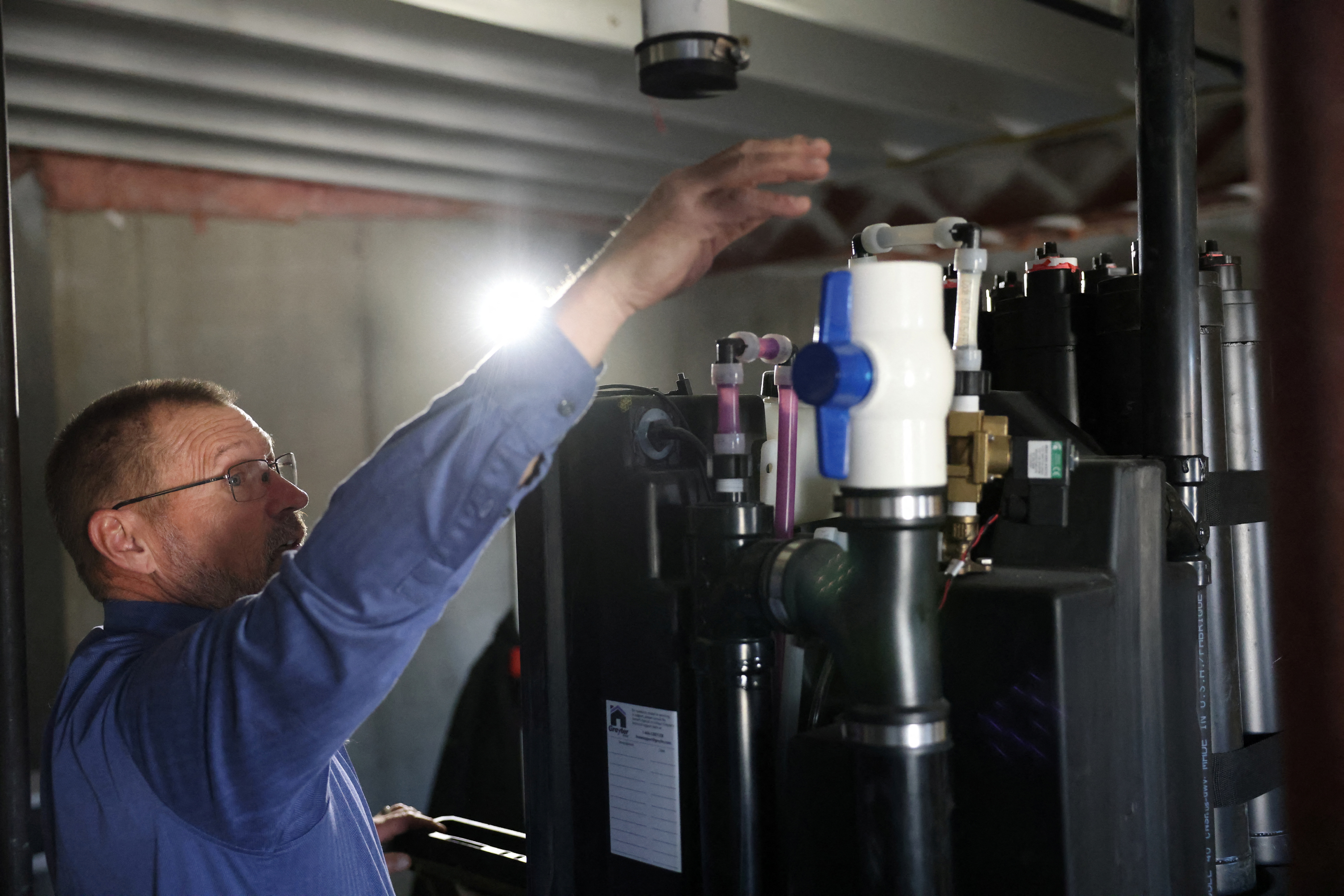
The idea isn’t new. Singapore has been treating sewage and recycling the water back into its reservoirs since 2003. San Diego, California, is building sewage recycling infrastructure. And Cath’s desert homeland of Israel is a world leader in desalinating seawater for drinking and treating wastewater for irrigation use.
Cath produced a half-million gallons of potable water from June through December – serving nearly 1,000 people who visited his lab. Most of those taste testers deemed the water good.
“The state needs to start investing and utilities need to start building the infrastructure” to allow utilities to clean and deliver reclaimed waste water for drinking, Cath said.
State officials are urging citizens to conserve water, while they also look to boost funding for infrastructure.
The state needs at least 10 times the $25 million currently allotted in its annual budget for the Department of Natural Resources, which funds water projects, according to the state’s official Water Plan.
FIRE TAINT
Apart from concerns about having enough water, Colorado is facing an increasing threat of wildfires sullying the supplies it does have.
Last summer, the college town of Fort Collins had to let some Cache la Poudre River water flow away after it was contaminated with ash and debris from a forest fire the year before.
Wildfires wipe out vegetation that would normally soak up some rainwater, leading to erosion and contaminated runoff for years. A study https://www.pnas.org/content/119/10/e2114069119 published in this month’s journal Proceedings of the National Academy of Sciences warned of an increase in hazards such as flooding and landslides in burned out areas of the U.S. West.
Fort Collins also has a water reservoir, so losing some from the Poudre supply wasn’t an immediate crisis.
Workers have been building permanent structures, at a cost of some $300,000, to block fire debris from getting into the water treatment plant, said Mark Kempton, Fort Collins Utilities’ interim deputy director for Water Resources & Treatment.
It is expected to take years to clear debris from a massive 2020 fire, and wildfires are growing more frequent and destructive amid climate change.
In the future, Kempton said, we could see “fire response becoming part of regular water rate increases.”
(Reporting by Donna Bryson in New York; Editing by Katy Daigle and Lisa Shumaker)

